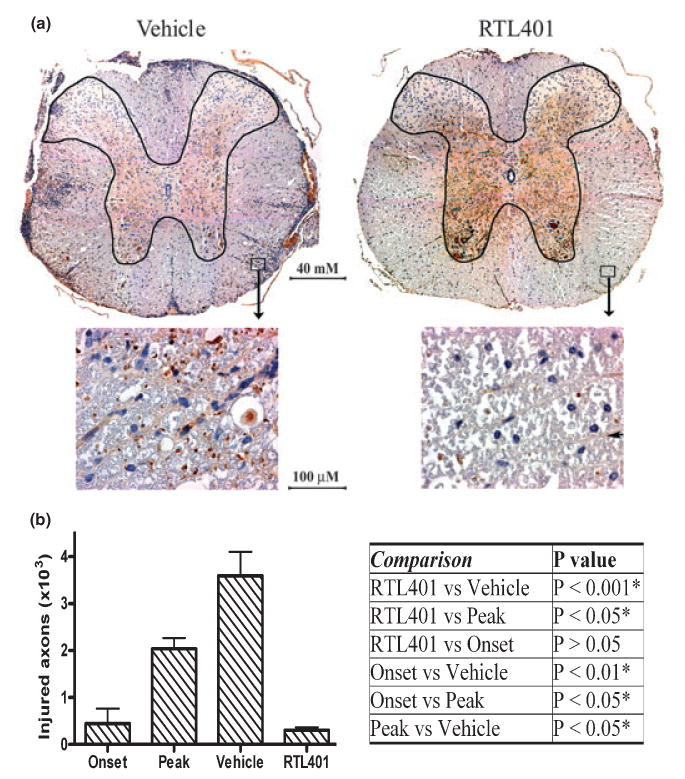Fig. 4.

RTL401-treatment reduced axonal injury in the spinal cord of EAE mice. (a) Representative non-phosphorylated neurofilaments (NPNFL), which are abnormally expressed in injured axons, of the thoracic spinal cord from EAE mice treated with vehicle (left panel) or RTL401 (right panel) 60 days after disease induction. Tissue sections were dissected from 4 mice per group, fixed and stained with antibody SMI32 for NPNFL (brown). The nuclei of inflammatory mononuclear cells were stained with hematoxylin (blue). Images were captured with a compound microscope equipped with a digital camera. (b) Morphometric analysis of the total number of injured (NPNFL-positive) axons in the whole thoracic spinal cord white matter in EAE mice. EAE mice were euthanized by perfusion with PBS at disease onset (day 11, disease score 1.5), peak (between day 15 and day 20, when disease scores reached 4.5), or at the termination of the experiment (day 60 of EAE, after RTL401 or vehicle treatment). The numbers of injured axons were counted manually by an investigator with no knowledge of treatment conditions. Data = mean ± SD (n = 4). Inserted Table: RTL401-treated mice show a significant reduction in the number of injured axons, demonstrated by one-way ANOVA followed by Newman-Kuels multiple comparisons test. *Comparison statistically significant.
